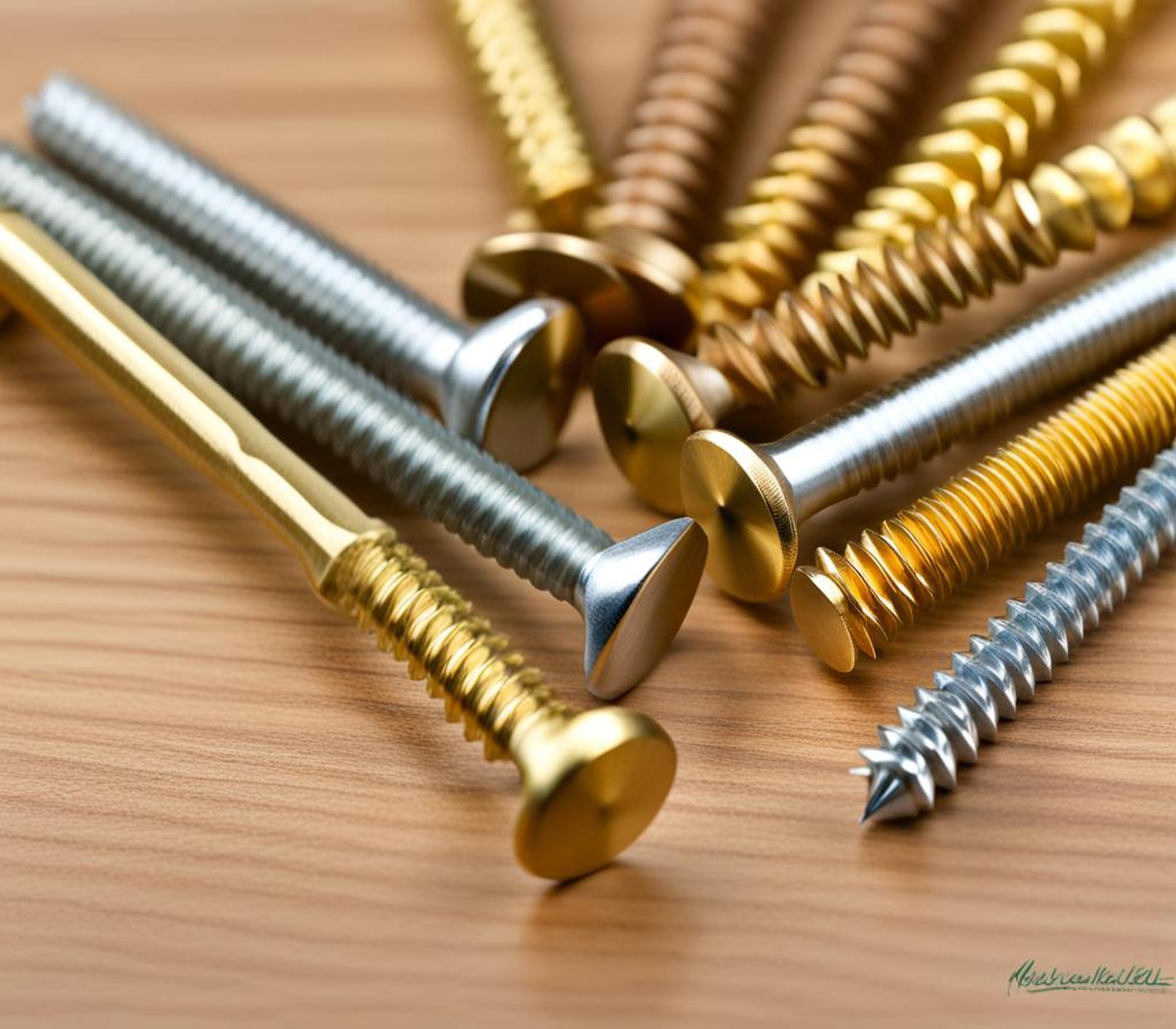Selecting the optimal screw length for woodworking projects can be tricky. Screws that are too short won’t have enough grip and loosening over time is inevitable. However, choose screws that are too long and you risk splitting the wood or the points protruding to the other side.
Achieving the ideal middle ground requires understanding key criteria that determines appropriate screw length for different woods and joint configurations. Get these wrong and your carefully crafted wood masterpiece could end up falling apart.
Key Criteria for Choosing Wood Screw Length
Unlike drywall or deck screws that have more standardized sizing, the range of lengths for wood screws is vast. While 1/2″ to 2″ covers many simple DIY jobs, heavy-duty structural wood screws can measure almost 24″ long. So how do you narrow such options down?
Wood Thickness
The thickness of the wooden pieces being joined is the obvious starting point for working out screw length needs. Are you dealing with 3/4″ boards for an easy DIY shelf? Or massive 8×8 timber beams to support a deck? Naturally, the thicker the wood, the longer the screws required.
However, wood type is equally important. Soft woods like pine, cedar and redwood tend to be less dense than hardwoods such as oak, maple or mahogany. Denser woods require longer screws to penetrate deeply enough for a secure grip. The same logic applies to manufactured wood boards.
Screw Gauge
While most are familiar with concepts like sheet metal gauge for indicating thickness, screw gauge works slightly differently. The lower the wood screw gauge number, the thicker, sturdier screw you get. So a #8 screw is thinner than a #4.
For softwoods under 1″ thick, a #8 gauge wood screw generally provides adequate grip. Go any thicker and #6 screws become the better choice for enhanced holding power without risk of wood damage.
Joint Configuration
Simply joining two boards together across their width, known as edge joining, has less intricate screw length considerations than other joint types. However, face fixing wider boards or attaching to end grain brings additional factors that could require longer fasteners.

The angle of connected wooden pieces also impacts shear vs lateral forces acting on screws. While shear strength involves forces acting perpendicular to the fastener, lateral loading puts stress parallel to the screw’s axis.
Pilot Holes
Pre-drilling guide holes for screws, especially in dense hardwoods like Teak, helps prevent splitting as you drive them in. Appropriately sized pilot holes also allow smoother screwing with less effort. Match bit widths to screw gauge thickness.
However, letting screws grip by themselves works better for softwoods. So pilot holes become more a matter of precision alignment than reducing wood damage risks. Positioning pilot holes wrongly though could still cause cracks.
Formula for Calculating Minimum Screw Length
As a rule of thumb for wood thickness under 1″, allow an extra 1/2″ screw length for secure fastening. For boards over 1″ thick, double the thickness to gauge desired length. However, additional key variables can change these guidelines.
General Rule of Thumb
- Screw Length = Wood Thickness + 1/2″ (for woods under 1″)
- Screw Length = 2 x Wood Thickness (for woods over 1″)
Variables that Adjust Guideline Length
If joining boards vertically or screwing into end grain, add another 1/2″ – 1″ for improved grip. Thicker wood also needs slightly oversized pilot holes to avoid cracking. Consider thicker gauge screws for added durability with dense hardwoods .
For materials like plywood, fiberboard or OSB, reduce length estimates by 1/4″ – 1/2″ to avoid protrusion . Loading direction also impacts length needs. Lateral shear force requires longer screws than direct withdrawal stress.
Matching Screw Type to Woodworking Application
Understanding screw options by category and measuring their length accordingly prevents selection mistakes.
Drywall Screws
Their sharp bugle heads penetrate plasterboard while leaving a space that lets underlying joint compound create a flat finish. Length equals thickness for ample drywall grip without hitting wires or pipes.
Deck Screws
Corrosion resistant exterior deck screws securely fasten wooden decks, fences, sheds and outdoor furniture that withstand weathering. 2″ – 3″suits most needs. For thicker stock, allow 4 times material density.
Timber Screws
Designed for fastening dimensional lumber posts and beams without pre-drilling. Thicker shafts, specialized drill points and higher shear strength suit structural applications. 21/2″ – 5″ models common.
Lag Screws
Heavy hex head bolts threaded for all-wood connections. Used with washers for demanding ledger strips, timber framing and decks. Larger 5/16″ – 3/8″ diameter grips better than screws. Standard lengths range from 11/2″ – 6″.
| Screw Category | Common Lengths |
| Drywall | 1″ – 2″ |
| Deck | 2″ – 4″ |
| Timber | 21/2″ – 5″ |
| Lag | 11/2″ – 6″ |
Preventing Wood Splitting and Screw Protrusion
Aside from optimal lengths and pilot holes, certain techniques also reduce damage risks.
Countersink Bit Benefits
Pre-drilling angled pilot holes to recess screw heads prevents surface splitting upon tightening. Guides screws invisibly flush with wood face.
Stop Collar Purpose and Technique
Adjustable stop collars on drill bits physically halt sinking screws at a preset depth to avoid poke-through. Especially useful for complex projects with varying material densities.
Choosing suitable screw lengths for woodworking jobs requires considering several key criteria we’ve covered. Wood thickness and density, joint layout, screw gauge, hole drilling, and force loading all help determine ideal fastener length for problem-free driving.
Still unsure what size wood screws your next carpentry project needs? Consult our online screw length calculator for personalized requirements by inputting your woods and joint variables.
